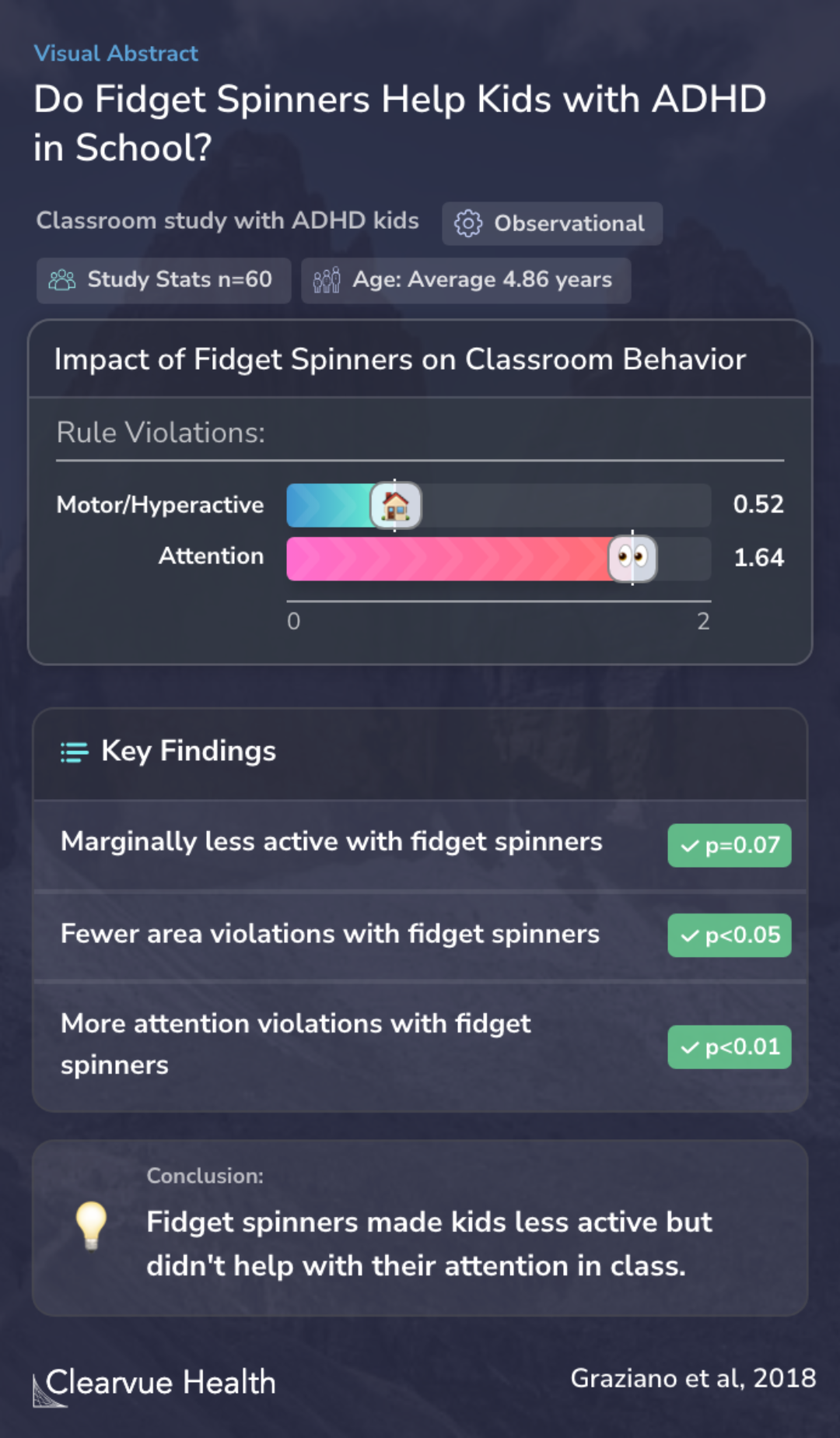To Fidget or Not to Fidget, That Is the Question: A Systematic Classroom Evaluation of Fidget Spinners Among Young Children With ADHD
Do Fidget Spinners Help Kids with ADHD in School?
Paulo A. Graziano, Alexis M. Garcia, Taylor D. Landis

Objectives
The paper set out to explore the impact of fidget spinners on children diagnosed with ADHD, particularly looking at how these toys affect their physical movement and focus in a classroom setting. This investigation was carried out at two different stages of an intensive treatment program that is backed by solid evidence to be effective for managing ADHD symptoms.
To examine how fidget spinners affect children with ADHD’s gross motor activity and attentional functioning in class, both during the initial and final phase of an intensive evidence-based behavioral treatment.
Methods
The study involved a careful examination of 60 young children who have ADHD. On average, these children were nearly 5 years old, and a large majority were of Hispanic heritage. The research used a specific study design known as A-B-A-B to get a clear picture of what was happening. This means they observed the children at different times: first without the fidget spinners, then with them, then again without, and finally with the spinners once more. During the times when the children had the fidget spinners, they were observed for short periods in their classrooms. The researchers used special tools called accelerometers to measure how much the children were moving, and they also recorded videos to closely watch the children's attention levels.
Using an A-B-A-B design, 60 children (Mage = 4.86 years, 83% Hispanic) diagnosed with ADHD participated in the study. Following a baseline period, four random children from each classroom were given fidget spinners across three separate days (n = 48). Children wore accelerometers and wer...
Results
The findings from the initial phase of the treatment indicated a noticeable drop in the children's activity levels when they were using fidget spinners. However, this change was not observed during the treatment's final phase. Across both phases, it was clear that the fidget spinners were linked to lower attention levels in the children. This was evident from the data showing increased attention violations and a slight decrease in hyperactivity or motor violations in the presence of fidget spinners.
During the initial phase of treatment (but not during the final phase), the use of fidget spinners was associated with a decrease in activity levels. Children’s use of fidget spinners was associated with poorer attention across both phases of treatment.
Conclusions
Fidget spinners, although they made the children less physically active, did not aid in improving their attention in class. This finding is critical, especially in the context of an evidence-based intervention aimed at enhancing classroom behavior and attention in young children with ADHD. The study's outcomes suggest that while fidget spinners may reduce physical activity, they could have a counterproductive effect on children's ability to focus and pay attention during lessons.
Fidget spinners negatively influence young children with ADHD’s attentional functioning, even in the context of an evidence-based classroom intervention.
Key Takeaways
Context
Other research has shown some minor benefits of fidget spinners, like aiding in precise movements. However, the importance of this benefit is unclear, particularly when it comes to the classroom:
The relationship between motor skills and ADHD symptoms such as attention and impulse control has been established in previous studies, highlighting the complex interplay between these factors in children with ADHD.